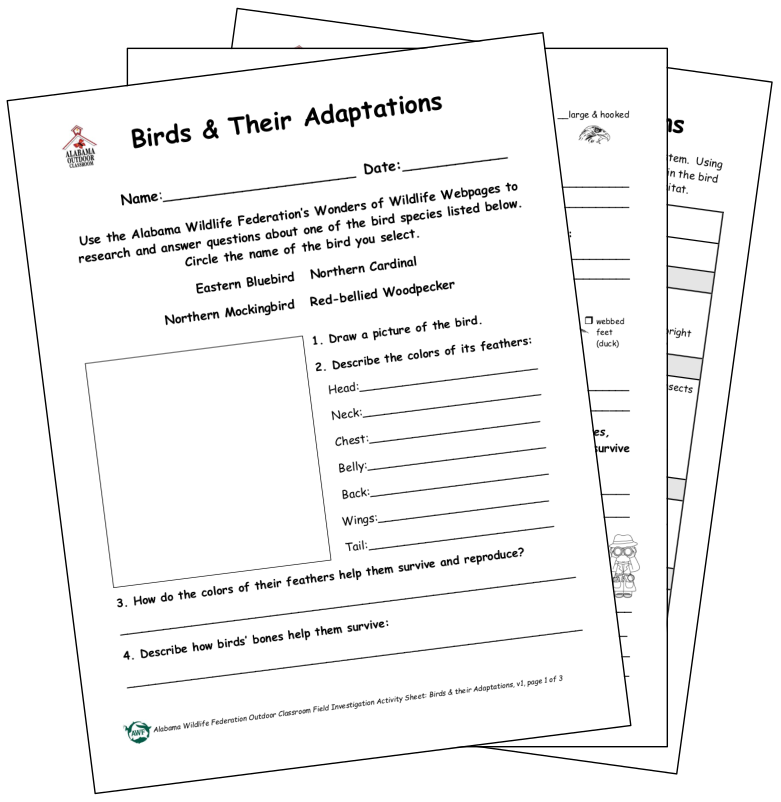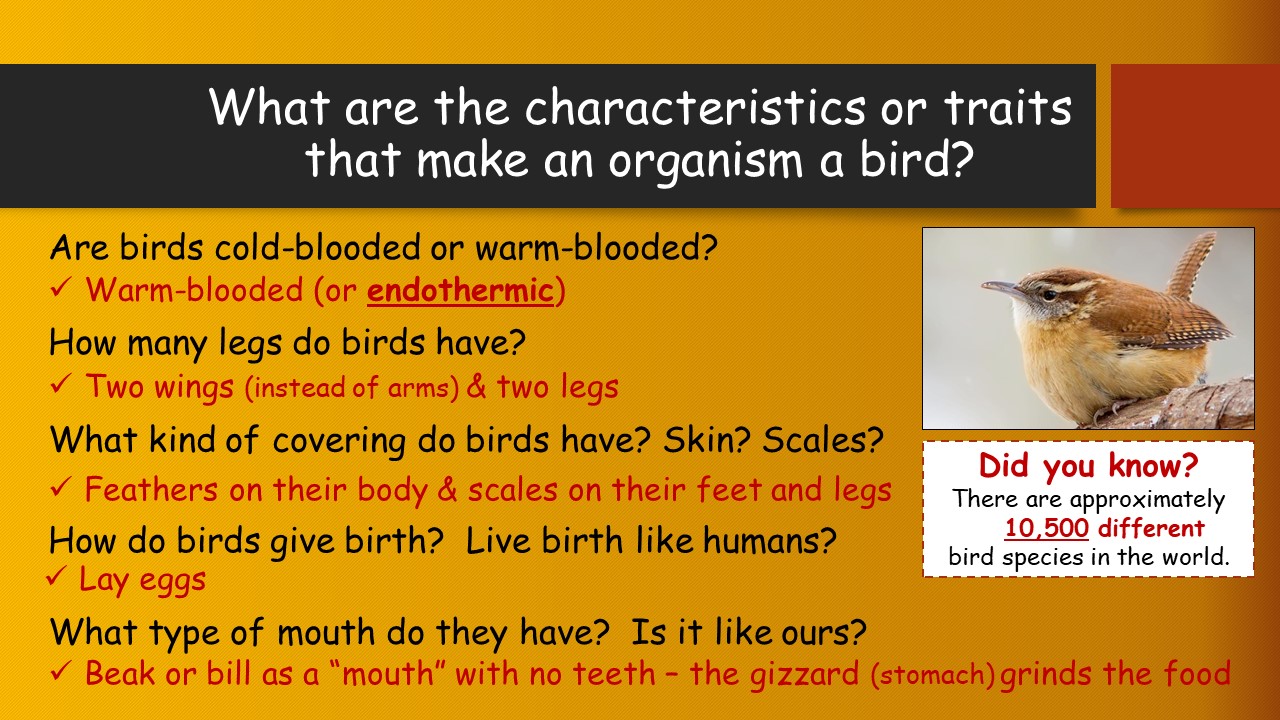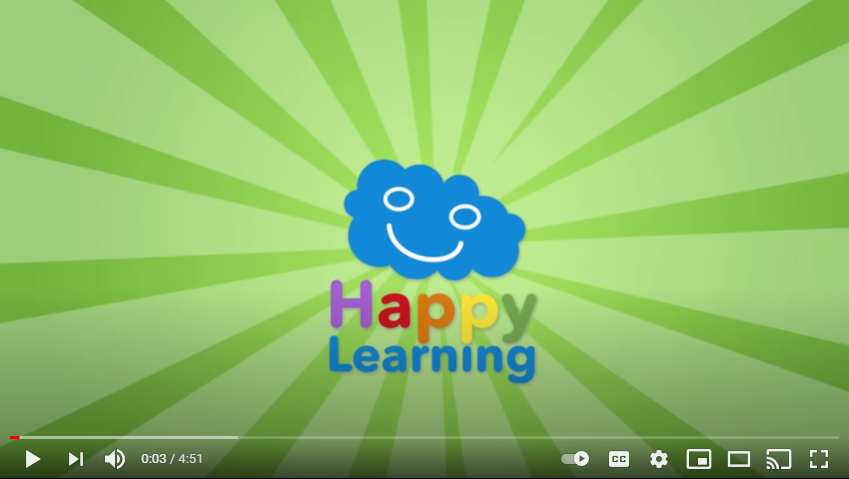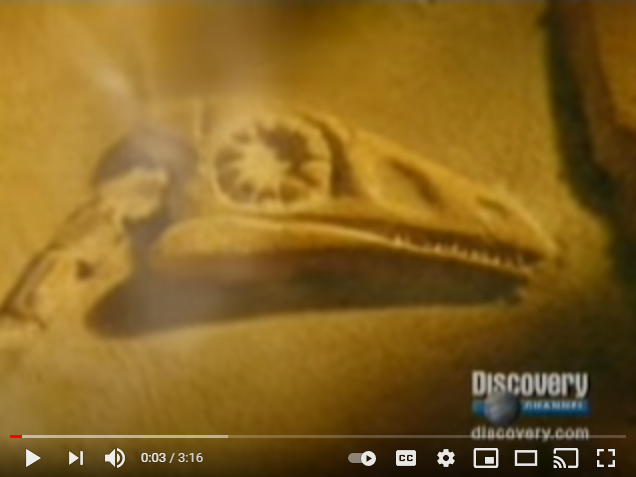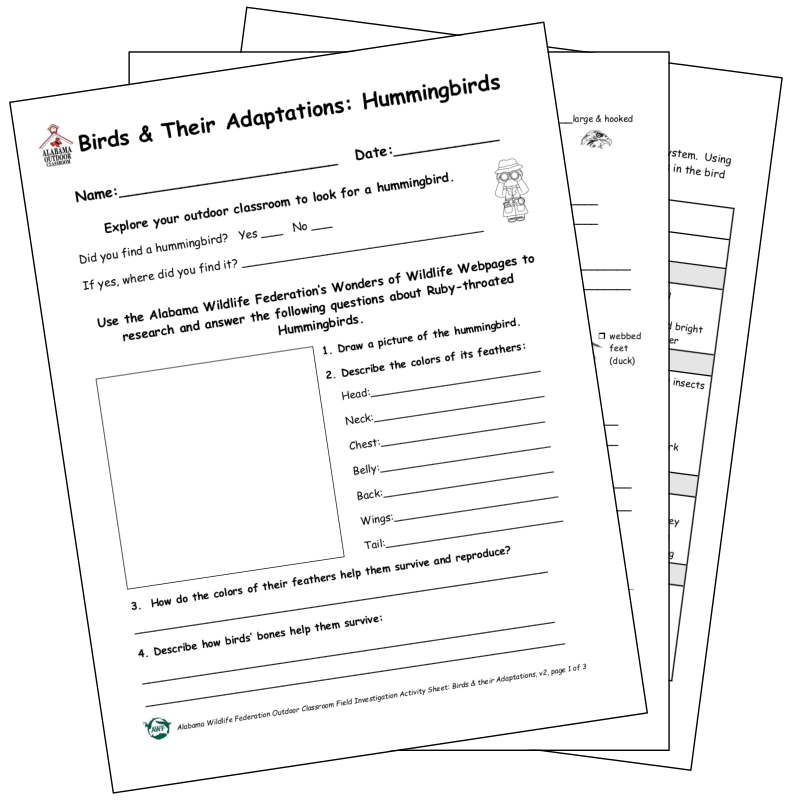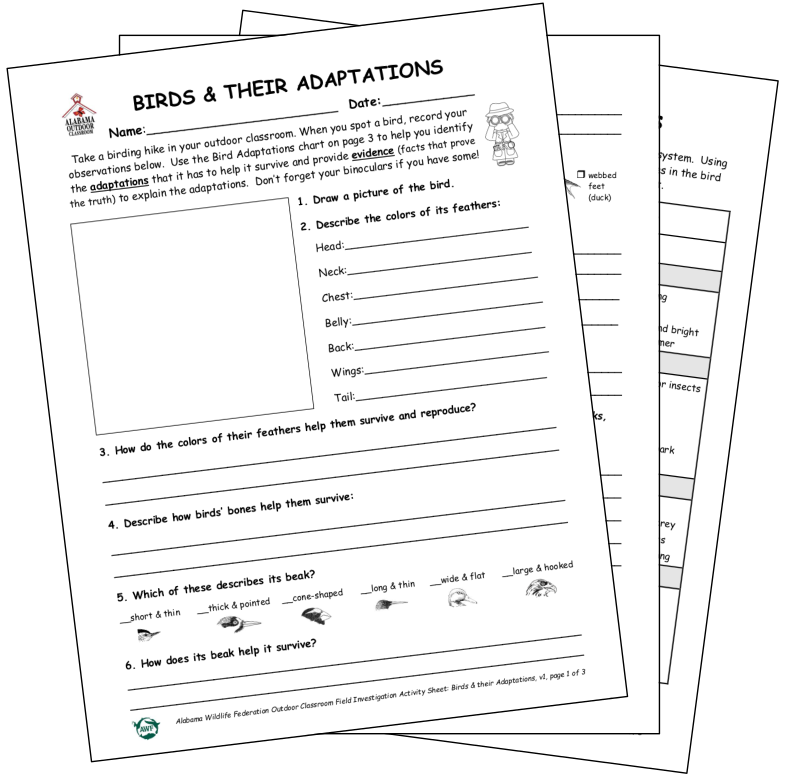Field Investigation: Birds and Their Adaptations
Students observe the internal and external structures of birds and learn how these adaptations help with their survival, growth, behavior and reproduction. Then the students will observe, identify and research a bird found in the outdoor classroom to provide evidence for its adaptations.
Questions? Contact us at oc@alabamawildlife.org.
| Click on the orange links to access free educational materials: | |
| Lesson Plans | ALSDE Standards Taught | |
| Activity Page #1: Birds & Their Adaptations (or as Word Doc) | |
| Activity Page #2: Hummingbirds & Their Adaptations (or as Word Doc) with Answer Page #2 |
|
| Outdoor Activity Materials: activity pages, clipboards, pencils, copies of field identification guides |
|
Step 1: Engage through Discussion
|
|
| Engage the students and capture their interests with an Interactive PowerPoint and Q&A (or as PDF) that allows you to click through the questions and answers separately, so that you have time to discuss possible answers with your students BEFORE showing them the answer on the slide. You can gauge your students' understanding of the topic as they answer the questions. | |
| Tip #1: Print and use the Q&A Info Sheet (or as Word Doc) to anticipate the next question in the Interactive Q&A and to guide the conversation with the students. Tip #2: To use the PowerPoint (PPT) for an interactive discussion, you must click "Slide Show" & "From Beginning" to display the questions and answers separately. |
|
Use these tools to continue the discussion:
|
|
| Step 2: Explore with Literature | ||
| As you read these books, you can further explore the topic and discuss your students' experiences and knowledge around the topic: Feathers: Not Just For Flying by Melissa Stewart ISBN: 978-1-58089-431-9 Birdology by Monica Russos ISBN: 978-1-61374-949-4 A Backyard Birding Adventure: What's in Your Yard by Kermit Cummings ISBN: 978-1612542362 The Burgess Bird Book for Children (Dover Children's Classics) by Thorton W. Burgess ISBN: 978-0486428406 |
|
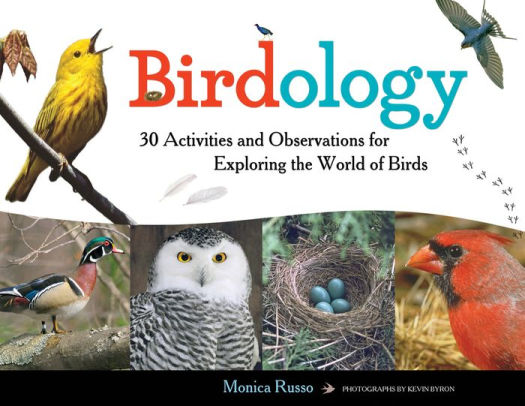 |
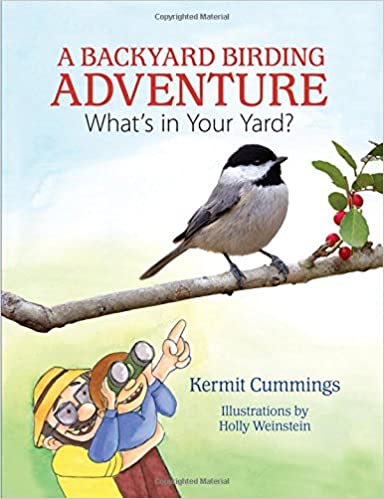 |
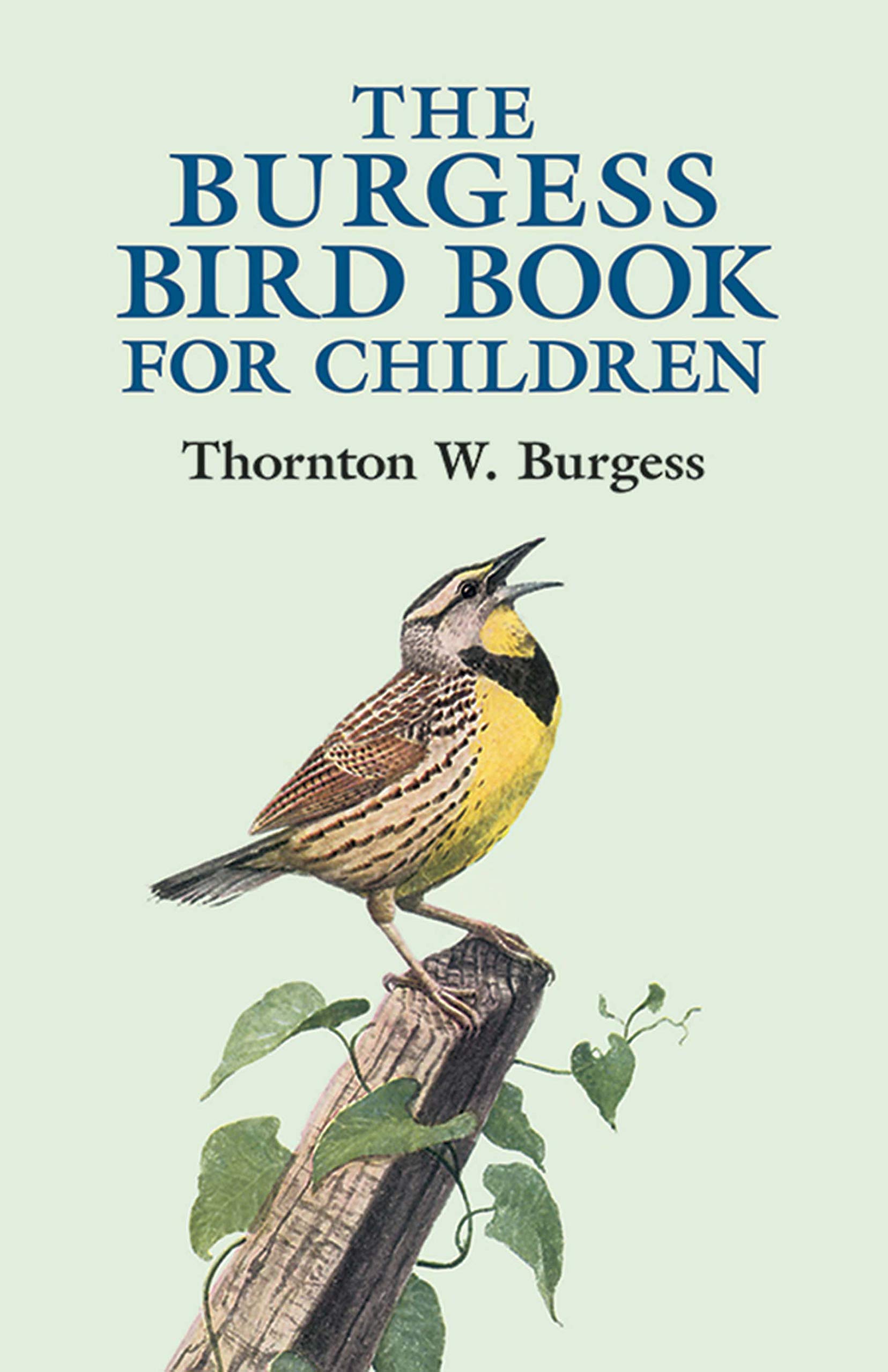 |
|
| Step 3: Explain with Educational Videos | |
| Use these educational videos to help explain the topic in more detail: | |
| Birds: Educational Video for Kids by Happy Learning (4:26 min.) @ https://www.youtube.com/watch?v=8vL_2rF8JHU |
Bird Evolution and Adaptations by Discovery Channel (3:15 min.) @ https://www.youtube.com/watch?v=A5kzxOtvCjc |
| Step 4: Elaborate with a Field Investigation in the Outdoor Classroom | ||
| Students apply what they have learned as they investigate the topic in your outdoor classroom and record their real-world observations on their activity page: | ||
| Version #1: Birds and Their Adaptations |
Version #2: Hummingbirds and their Adaptations |
|
Activity Tip
|
||
| Version #1 - Birds and Their Adaptations Activity Page: PDF (as is) / Word Doc (editable) Procedure Indoor Discussion:
|
||
| Version #2 - Hummingbirds and their Adaptations Activity Page: PDF (as is) / Word Doc (editable) Procedure
Outdoor Discovery:
|
||
Wildlife Identification Resources:
|
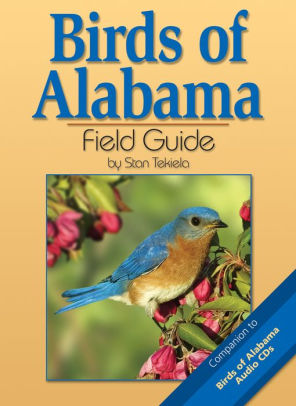 |
|
| Step 5: Evaluate with an Assessment Activity | ||
| Review and assess the students’ observations and answers on their observation pages:
Evaluate the students' understanding of the topic with the following assessment tool:
|
||
Questions? Contact us at oc@alabamawildlife.org.
 Wildlife Tag
Wildlife Tag
